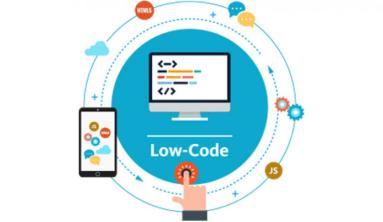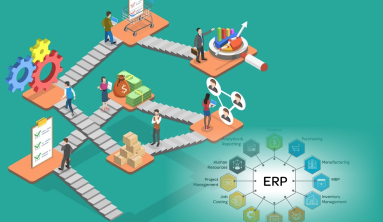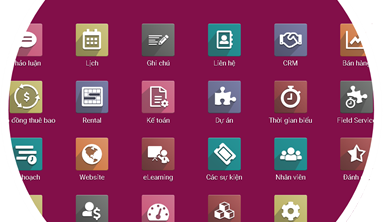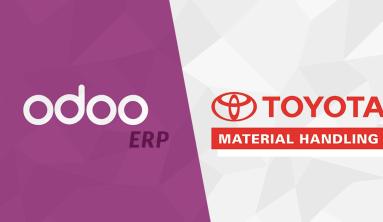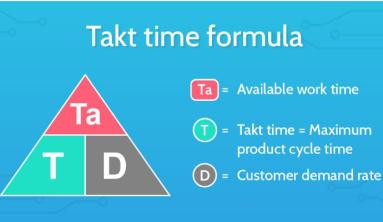From the perspective of leaders who have a direct decision on the Odoo ERP implementation method, you can choose 1 of 3 ERP implementation strategies as follows:
Big Bang (total deployment method)
This is the overall deployment method for all departments in all modules at the same time. Requires a huge mix of resources and will inevitably lead to business disruption.
Phased (phased rollout implementation)
You can divide your project into many stages for implementation, and will gradually expand the ERP solution to less essential departments. This solution is one of the core methods applied by TIGO to avoid hurting the existing operation of the Enterprise.
Parallel (parallel implementation method)
This is a deployment method where you will use the existing software solution simultaneously and parallel with which you will deploy the new's solution. This solution is now almost mandatory to meet the integrity of existing operations.
Big Bang - Total Deployment
As the analysis above, this is a deployment strategy that carries a huge risk, the largest of the three strategies, but in return, it will have two advantages (1) fast deployment time and (2) ) low cost. Choose Big Bang once the leadership's request is to quickly bring the Odoo ERP solution into the business, but you need to prepare extremely carefully for the entire implementation process.
With this option, it will normally be deployed in a low period or at times when the market is not favorable such as the period when enterprises encounter the Covid-19 and Covid-19 epidemics.
Approach is always an issue you need to consider carefully. Most ERP solutions are designed with a standard process, so try to adapt the existing process to ERP, especially ERPs with many years of experience such as Odoo, SAP, Oracle, Microsoft Dynamic AX.
To be successful, it is imperative that you identify and minimize risks where understanding the needs and characteristics of the Business is paramount - how much has the solution's features met? Percentage of users requesting? How many of the remaining requirements need to be customized and developed separately? How is the development time? Will it affect the planned operation? Many factors need to be carefully considered and discussed between the implementation team and the consulting and technical team.
For Big Bang, it must be more detailed, must be monitored more closely with the sole purpose of reducing risk to the project. Any change in user requirements greatly affects the progress and implementation plan of the whole project. Therefore, it needs to be strictly controlled.
Phased Rollout Implementation
Phased Rollout is used when you want to divide a project into several phases such as you can deploy sales, purchasing, inventory first; then to the logistics, production, then to the financial accounting, etc. The specific stage depends on the urgency of each core process cluster in the entire operation process. There are ways to divide the stages as follows.
- Divide the stage by module (Sales, accounting, finance).
- Stage by chain of processes linking multiple departments. This is the option recommended by TIGO for many successful ERP implementation customers.
- Stage by the Business Units of your business (usually applicable to the Group level).
- Split Phased by geographic location (usually applicable to multinationals).
You will find Phased Rollout is the most neutral deployment strategy, the risk is moderate, the deployment time is also average of the 3 deployment methods, and finally the cost is also in the middle. average level of 3 implementation methods.
When successfully implementing a phase, the enterprise and the implementing unit will have a lot of experience to be able to adjust in the next stage, change the approach to be more suitable, adjust the steps. deployment, how to work internally within the deployment team as well as for the end user who is an employee.
Parallel Implementation
With this deployment option, you operate in parallel between the current software (excel, misa, bravo, fast, etc.) and the ERP solution for a long time, and cut and switch slowly step by step for old management software. This is the most time-consuming and expensive implementation method, but it is very safe in return as users will approach it gradually until they have fully mastered the new ERP solution and are experienced enough to walk away. old solution.
For each business, TIGO can offer the most suitable options depending on the actual situation and capacity of the personnel. You can choose a specific method, or you can mix it up for each stage of implementation to ensure the success of the project. The ultimate goal is to ensure that the ERP solution is put into operation on time and at an acceptable cost.
The wisdom and communication of the leadership and project management board in the ERP solution implementation strategy plays a very important role. You should consider carefully, receive advice from experts on business administration as well as experts on system implementation to ensure the right choice of solution and implementation method.
If you’re still unsure which rollout plan is true for you, our Odoo ERP implementation consultants can help you assess your needs. We have expertise developing implementation strategies for a wide range of enterprise solutions, together with ERP, CRM, Industry specific systems, and more. Contact us below for a free Odoo ERP consultation.

